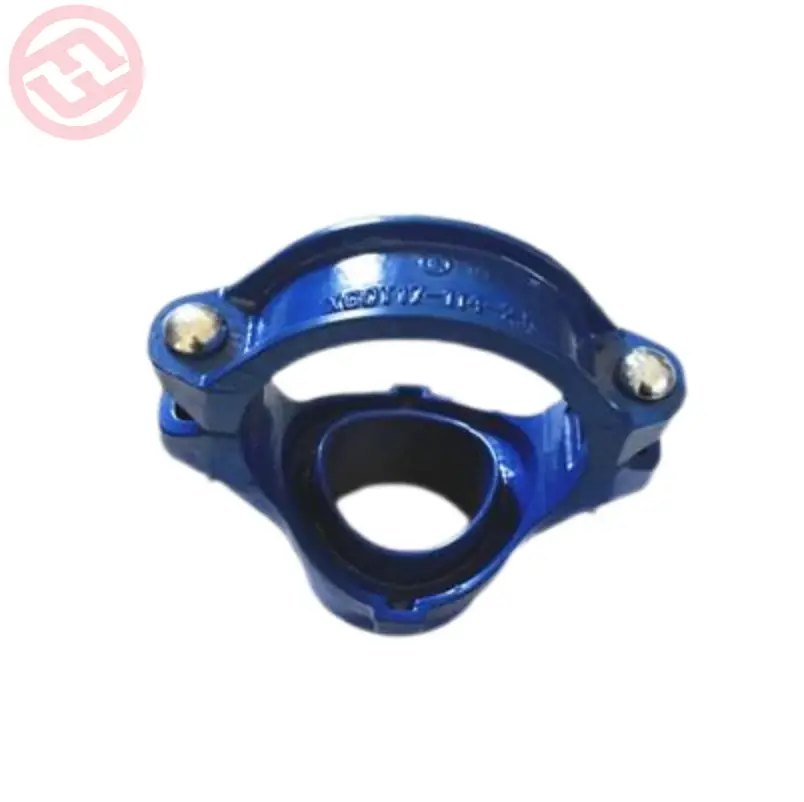Grooved fittings play a vital role in piping systems, offering a secure, efficient, and flexible means of connecting pipes and conduits.Among the array of piping connection technologies, grooved connections are distinguished by their unique benefits. Grooved Tees, Crosses, and Reducers are not just central to grooved technology but also foundational for building modern, efficient piping systems. This article explores the technological innovations behind these three types of grooved fittings, revealing how our perceptions of pipe connections have been transformed. It is shown that the installation and maintenance of piping systems have become quicker and more economical, all while high levels of integration and safety are maintained.
Grooved Tee
A Grooved Tee, shaped as a ‘T’ with grooved ends, is crafted to connect three pipe sections at a 90-degree angle. It features two horizontal outlets and one vertical one (or the reverse), enabling fluids or gases to either diverge from the main pipeline into two different branches or converge from two branches into the main line.
What are the Steps to Install Grooved Tee?
Here’s a clear outline of the steps for installing a Grooved Tee:
Preparation:
- Each pipe end is examined to be smooth, without burrs, and squarely aligned with the pipe’s axis.
- The pipe’s groove is thoroughly cleaned, ensuring no dirt, rust, or other impurities.
Groove Processing:
- A precise groove is pressed into the pipe end using professional tools like a grooving machine.
- The groove’s size is verified according to Grooved Tee specifications to ensure a proper fit and seal.
Sealing Ring Installation:
- A special rubber sealing ring is placed in the groove, ensuring it’s evenly positioned and not twisted.
Grooved Tee Connection:
- The Grooved Tee is slid into the pipe’s groove and aligned with the pipe end face.
- The Grooved Tee’s outlet is aligned with the intended connection direction.
Clamping Ring Installation and Tightening:
- A special clamping ring is fit over the Grooved Tee’s groove and sealing ring, and its position is adjusted.
- The clamping ring is secured on the Grooved Tee using bolts and nuts, evenly tightened diagonally following the manufacturer’s torque recommendations.
Checking and Testing:
- After installation, the Grooved Tee’s connection is thoroughly checked to ensure no leaks.
- A water pressure test or other relevant tests are performed to verify the system’s overall seal and pressure resistance.
Adherence to Guidelines:
- Throughout the installation, the manufacturer’s instructions and local regulations are strictly followed.
Professional Installation:
- Given the importance of piping system safety, it’s recommended to hire professional pipe installation engineers or technicians to install the Grooved Tee.

Grooved Cross Connectors: The Intersection of Efficiency and Durability in Piping Systems
The Grooved Cross, also referred to as a Four-Way Grooved Tee or Cross Fitting, is identified by its four grooved ends, configured in a cross shape. This component connects four pipe sections, allowing them to meet at a central junction, with each pipe set perpendicularly to the others.
Function:
The Grooved Cross primarily serves to establish intersections in piping systems, facilitating the convergence or divergence of four separate lines. This enables intricate network layouts, manifold installations, or the dissemination of media from a central supply line to multiple points.
How Does the Grooved Cross Connect Four Pipe Sections?
A Grooved Cross fitting is crafted to link four pipe sections into a cross-shaped layout, creating a four-way junction. This is especially handy for adding a new branch line to the main pipeline without halting the flow.
Here’s the connection process for four pipe sections:
- Grooved Ends: Each end of the Grooved Cross has a groove made for securing the pipe with a coupling.
- Pipe Preparation: The pipes’ ends are grooved, either factory-made or on-site, using a grooving machine, creating a circumferential groove.
- Gasket Placement: Around the grooved end of the pipe, a rubber-sealed gasket is placed. This gasket, fitting the groove’s profile, ensures a leak-free seal.
- Coupling Installation: Over the gasket, a two-piece grooved coupling is fitted, securing the connection.
Grooved Reducer
A Grooved Reducer is a fitting characterized by its grooved ends, which feature varying internal diameters. Its design facilitates the connection of two pipes of dissimilar sizes, ensuring a seamless transition from larger to smaller sections within a piping system, all while upholding a leak-proof seal.
What are the Characteristics of the Design of Grooved Reducer?
The Grooved Reducer, also known as a grooved coupling reducer, is designed with the following features:
- Efficient Connectivity: Utilizing grooved connection technology, it enables quick and secure pipe connections, enhancing installation efficiency.
- Flexibility: The grooved joint allows for axial displacement and angular deviation, granting greater adjustability and adaptability to the piping system.
- Excellent Sealing: Working with specialized sealing rings, it effectively ensures leak-free joints, suitable for transporting various media.
- Vibration and Seismic Resistance: The flexibility of the grooved connection absorbs vibrations and shocks, improving the system’s resistance to seismic activity.
- Ease of Maintenance: The unique connection method simplifies operations during maintenance or part replacement, significantly reducing maintenance costs and time.
- Wide Application Range: It suits various systems, like fire protection, HVAC, water supply, chemicals, and mining.
Grooved Tees, Crosses, and Reducers play pivotal roles in piping systems, fulfilling tasks like branching, intersecting, and size transitions. Each fitting is equipped with grooved ends, ensuring swift and dependable connections, and is made from ductile iron for lasting durability. They come in various sizes, meeting the needs of diverse applications. A comprehensive understanding of their functions, characteristics, and uses enables their effective incorporation into plumbing, fire protection, HVAC, or industrial piping endeavors.
